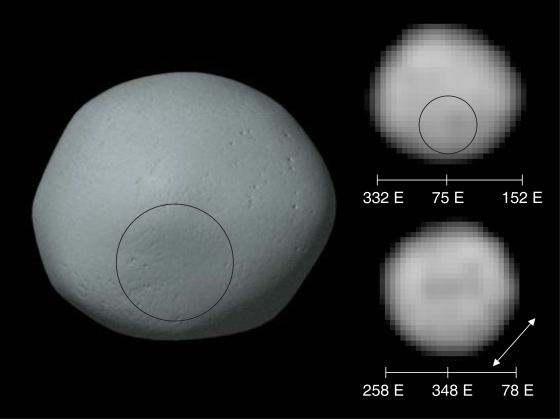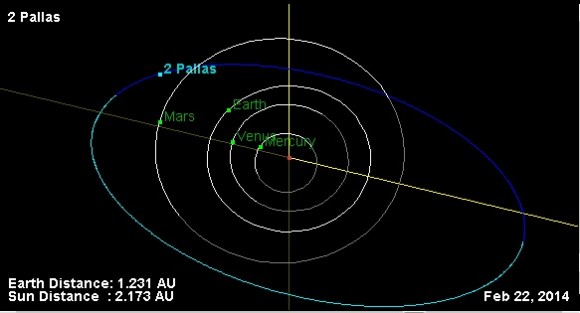Universe Today
Now’s the Time to See Asteroid Pallas at its Best

Images of 2 Pallas taken by Hubble (right) and a simulation (left) of the surface. Credit: NASA/JPL.
Over the coming weeks, 2 Pallas, one of the “big four” asteroids – or do you say minor/dwarf planet/planetoid? – reaches a favorable observing point known as opposition. Gliding northward through the constellations of Hydra and Sextans through February and March 2014, 2 Pallas presents a favorable binocular challenge for both northern and southern hemisphere observers as it rises to the east opposite to the setting Sun and transits the local meridian around midnight.
And although 2 Pallas reaches opposition roughly every 16 months as seen from our Earthly vantage point, 2014 provides a chance to catch it under exceptional circumstances. And to top it off, the other “Big 4” asteroids – 1 Ceres, 3 Juno and 4 Vesta – are all currently visible as well and reach opposition in the January through April time frame.
Pallas and its brethren also have a checkered history though the course of 19th century astronomy. The second minor planet to be discovered, Heinrich Wilhelm Olbers spied 2 Pallas near opposition on the night of March 28th, 1802. Olbers made this discovery observing from his home rooftop observatory in Bremen, Germany using a five foot – telescopes were often measured in focal length rather than aperture in those days – Dollond refractor.
Olbers discovered 2 Pallas on the border of the astronomical constellations of Virgo and Coma Berenices shining at magnitude +7.5.
If the name Olbers sounds familiar, it’s because he also lent it to the paradox that now bears his name. Obler’s paradox was one of the first true questions in cosmology posed in a scientific framework that asked: if the universe is actually infinite in time and space, then why isn’t the sky infinitely bright? And, on a curious side note, it was American horror author Edgar Allan Poe that delivered the answer.
But now back to our solar system. Olbers also discovered 4 Vesta just five years after Pallas.
He was definitely on a roll. The discoveries of these space rocks also grabbed the attention of Olbers contemporary, Johann Bode. Bode had formulated a law now known as the Titus-Bode Law that seemed to put the spacing of then known bodies of the solar system in tidy order. In fact, the Titus-Bode law seemed to predict that a body should lie between Mars and Jupiter, and for a brief time in the 18th century — and again in 2006 when the International Astronomical Union let Eris and Pluto in the door before kicking them back out — Ceres, Pallas, Juno and Vesta were all considered planets.
Read More Here





No comments:
Post a Comment
Hello and thank you for visiting my blog. Please share your thoughts and leave a comment :)